Introduction
Street photography has always been a genre that provokes strong reactions. For some, it is the beating heart of photographic art: unposed, unscripted, and alive with the energy of everyday life. For others, it is an uncomfortable intrusion, a practice that captures people without their consent and places their likeness into contexts they never chose. The debate is not new, but it has become sharper in recent years as questions of privacy, surveillance, and digital circulation have entered the frame.
Consider the controversy surrounding Bruce Gilden’s confrontational style in New York, where he used a flash to capture startled expressions at close range. Admirers hail his work as raw and honest; critics call it aggressive and invasive. Or think of the discovery of Vivian Maier’s vast archive, which transformed a private practice into public art. Her candid images are now celebrated worldwide, yet they raise questions about whether her subjects ever imagined themselves becoming part of a global cultural record.
The tension is not only about photographers and subjects—it is also about us as viewers. How do we feel when we see a candid image of a stranger? Do we admire its artistry, or do we wonder whether the person pictured would approve? And how would we feel if the lens were turned on us, capturing a moment we did not choose to share?
This article does not aim to settle the matter once and for all—indeed, it cannot. Instead, it will explore the arguments on both sides, tracing the history of street photography, examining its artistic value, and considering the ethical dilemmas it raises. Along the way, we will look at how technology and culture have changed the way we see candid images, and why the tension between art and privacy remains unresolved.
A Short History of Street Photography
Street photography emerged alongside the growth of modern cities in the late 19th and early 20th centuries. The bustle of urban life provided both subject matter and opportunity: anonymous crowds, fleeting gestures, and the drama of everyday encounters. From the beginning, it was a genre shaped by both technology and culture.
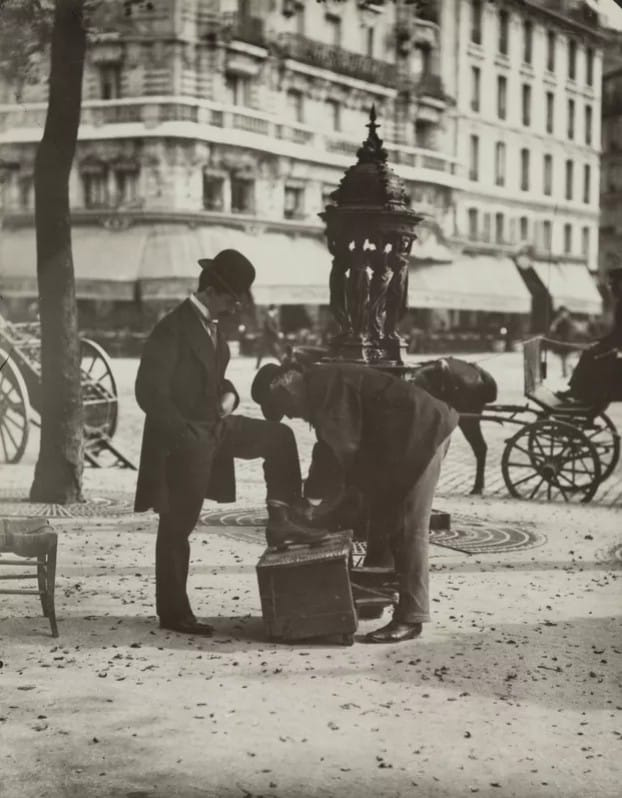
Jean Eugene Auguste Atget, 1899
Early Pioneers
One of the earliest figures associated with the genre was Eugène Atget, who photographed the streets of Paris between the 1890s and 1920s. His images of shopfronts, alleyways, and ordinary workers were not initially recognised as art, but later became celebrated for their documentary and aesthetic qualities. The Museum of Modern Art in New York holds a significant collection of his work, describing it as “a visual encyclopaedia of Paris.”
Atget’s photographs were not candid in the modern sense—he often focused on architecture and empty streets—but they laid the groundwork for later photographers who sought to capture the human presence in public spaces. His influence extended beyond photography: Surrealist artists admired the uncanny atmosphere of his deserted streets, seeing them as dreamlike fragments of modernity.
The Decisive Moment
The genre gained further definition with Henri Cartier‑Bresson, whose idea of the decisive moment—the instant when form and content align perfectly—became a guiding principle. His 1952 book Images à la Sauvette (published in English as The Decisive Moment) remains a touchstone for photographers who value spontaneity and timing.
Consider his famous image of a man leaping across a puddle behind the Gare Saint‑Lazare: the timing is so precise that the figure seems suspended between chaos and grace. Such photographs demonstrated how candid photography could transcend documentation and become art, shaping the way generations of photographers approached the street.
Mid‑20th Century Expansion
In the mid‑20th century, American photographers such as Garry Winogrand, Joel Meyerowitz, and Diane Arbus pushed the boundaries further. Winogrand’s chaotic street scenes captured the energy of post‑war America, while Meyerowitz pioneered colour street photography, proving that colour could be as expressive as black and white. Arbus’s portraits of marginalised individuals raised questions about voyeurism and empathy, showing how street photography could provoke as well as celebrate.
In Britain, Martin Parr brought a satirical eye to everyday life, documenting seaside holidays, shopping centres, and social rituals with a mix of humour and critique. His work, often exhibited at Tate Modern, demonstrates how street photography can reflect national character while also challenging it.
Adding to this expansion, Helen Levitt in New York captured children chalking games on pavements, offering a lyrical counterpoint to Winogrand’s chaos. Her work showed that street photography could be tender as well as confrontational. Meanwhile, Fan Ho in Hong Kong infused his images with dramatic light and geometric composition, blending documentary realism with poetic atmosphere.
Hidden Archives and Rediscovery
The story of Vivian Maier adds another layer to the history. Working as a nanny in Chicago, she photographed obsessively but never shared her work publicly. Her archive, discovered only after her death in 2009, revealed a vast body of candid images that are now celebrated worldwide. Maier’s case raises intriguing questions: was she practising art privately, or simply documenting her surroundings? And what does it mean for subjects when their images, taken decades earlier, suddenly enter the global spotlight?
International Voices
Street photography has never been confined to Europe and America. In Japan, Daido Moriyama brought a raw, grainy aesthetic to the genre, emphasising atmosphere over clarity. His work reflected the disorientation of post‑war Tokyo and showed how street photography could be as much about mood as about documentation. In India, Raghubir Singh used colour to capture the vibrancy of everyday life, blending documentary realism with painterly composition. In Latin America, photographers such as Graciela Iturbide explored cultural rituals and everyday life, adding regional perspectives often overlooked in Western histories.
Exhibitions and Recognition
By the late 20th century, street photography had become a recognised genre within art institutions. Exhibitions at MoMA, Tate Modern, and the International Center of Photography in New York helped to legitimise candid photography as art rather than mere documentation. Yet even as it entered the museum, the debate about ethics and privacy remained unresolved.
The Case for Street Photography as Art
Supporters of street photography often argue that it represents one of the most vital forms of photographic art. Unlike studio portraiture or commercial work, it thrives on spontaneity. The photographer does not control the scene but responds to it, shaping meaning from the unpredictable flow of public life.
Authenticity and the Unposed Moment
Street photography is celebrated for its authenticity. The subjects are not actors, and the moments are not staged. This lends the images a sense of truth—however partial—that resonates with viewers. Henri Cartier‑Bresson’s notion of the decisive moment remains central here: the idea that a fleeting gesture, a glance, or a juxtaposition can crystallise into something timeless.
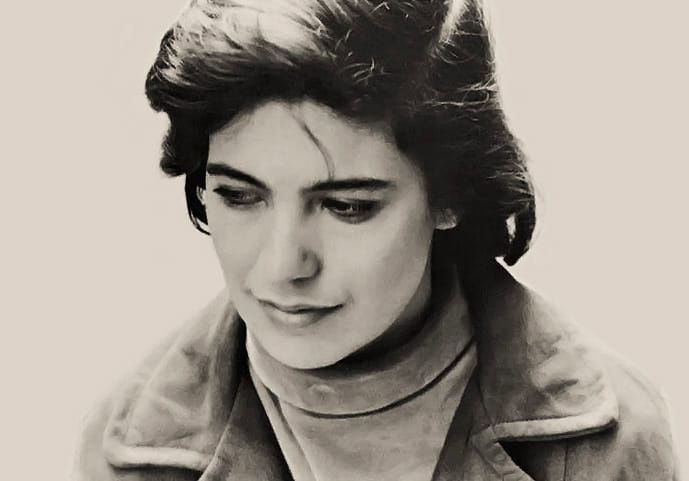
Philosophers of photography, such as Susan Sontag in On Photography (1977), have argued that the camera’s ability to capture unplanned reality gives it a unique power. For Sontag, photographs are both evidence and interpretation, and street photography exemplifies this duality. Roland Barthes, in Camera Lucida (1980), added another layer by distinguishing between the studium (the cultural, coded meaning of an image) and the punctum (the detail that pierces the viewer emotionally). Street photography often thrives on punctum—the unplanned gesture that jolts us into recognition.
Cultural Record
Beyond aesthetics, street photography serves as a cultural archive. It documents fashion, architecture, social behaviour, and political atmosphere. Garry Winogrand’s images of mid‑20th‑century America, for example, captured not only individuals but also the mood of an era. His work is now studied as much for its sociological insight as for its artistry (Garry Winogrand: Figments from the Real World, MoMA, 1988).
Similarly, Martin Parr’s satirical images of British seaside holidays and shopping centres reveal not just what people looked like but how they lived, what they valued, and how they interacted. These photographs are now part of the collective memory of British culture. Helen Levitt’s lyrical depictions of children chalking games on New York pavements add another dimension, showing how street photography can preserve the fleeting rituals of everyday life.
Aesthetic Value
Street photography is not merely documentary; it is also deeply aesthetic. Composition, light, and timing all play crucial roles. Daido Moriyama’s grainy, high‑contrast images of Tokyo demonstrate how atmosphere can be prioritised over clarity, creating a visual language that is as expressive as painting or poetry.
Joel Meyerowitz’s pioneering use of colour in the 1960s and 70s challenged the dominance of black‑and‑white, showing that colour could add emotional depth and vibrancy to candid scenes. His work helped elevate colour photography to the status of fine art. Fan Ho, working in Hong Kong, used dramatic light and geometric framing to transform crowded streets into near‑abstract compositions, proving that candid photography could be as formally sophisticated as any other medium.
Influence Across Disciplines
Street photography has influenced other art forms. Filmmakers such as Michelangelo Antonioni and Wong Kar‑wai have drawn on its aesthetics, using fleeting gestures and urban atmospheres to shape cinematic language. Painters and graphic novelists have borrowed from its framing and composition, demonstrating how the genre’s visual grammar extends beyond photography. Even contemporary fashion campaigns often mimic the candid look of street photography, blurring the line between documentary and commerce.
Freedom of Expression
Finally, advocates see street photography as a matter of artistic freedom. Public spaces are shared spaces, and the act of photographing them is part of how culture is expressed. To restrict candid photography too heavily, they argue, would be to limit artistic exploration and silence a vital form of visual storytelling.
The American tradition of free expression often supports this view. Courts in the United States have repeatedly upheld the right to photograph in public, citing the First Amendment. For defenders of the genre, this legal protection underscores the idea that street photography is not only art but also a democratic practice. In their view, the freedom to photograph is inseparable from the freedom to observe, record, and reflect on society itself.
The Case Against: Privacy and Ethics
For all its artistic merits, street photography has long been shadowed by ethical concerns. The very qualities that make it compelling—its spontaneity, its candidness, its lack of staging—also raise questions about consent, dignity, and the rights of those being photographed.
Consent and the Right to Choose
One of the most common objections is that subjects rarely give permission. A photograph taken in public may be legal, but legality does not always equate to morality. People may feel exposed, misrepresented, or simply uncomfortable at the thought of their likeness being captured and circulated without their knowledge.
In Europe, the General Data Protection Regulation (GDPR) has sharpened this debate, emphasising individual rights over personal data, including images (Regulation (EU) 2016/679). While GDPR does not ban street photography outright, it places responsibility on photographers when images are stored, shared, or monetised. This has led to uncertainty: is a candid photograph “personal data,” and if so, how should it be handled?
The issue becomes even more complex when photographs are monetised. A candid image that might feel acceptable in a gallery can feel exploitative if used in advertising or sold as a print. The subject has no say in how their likeness is transformed into cultural or financial capital.
Dignity and Exploitation
Critics argue that street photography can exploit vulnerable individuals. Images of homelessness, poverty, or distress may be powerful, but they risk reducing subjects to symbols rather than respecting them as people. Diane Arbus’s work, for instance, has been praised for its empathy but also criticised for voyeurism, raising the question of whether art can justify discomfort.
Psychologists note that being photographed without consent can trigger feelings of anxiety or loss of control. For some, the knowledge that their image is circulating online—even in an artistic context—can feel like a violation of personal dignity. This is particularly acute in cultures where personal honour or “face” carries strong social weight, such as in parts of East Asia.
Legal Frameworks and Cultural Differences
The rules vary widely across jurisdictions:
- United Kingdom: photographing people in public is generally lawful, but publishing those images can raise issues of defamation or misuse.
- Germany: strict personality rights mean that consent is often required before publication (Bundesgerichtshof ruling, VI ZR 373/02, 2004).
- France: courts have upheld privacy rights even in public spaces, particularly when images are used commercially.
- United States: the First Amendment strongly protects freedom of expression, making candid photography broadly permissible.
- Japan: cultural emphasis on respect and personal space influences attitudes, even where the law is less prescriptive.
These differences highlight how cultural attitudes towards privacy shape the boundaries of photographic practice. In Germany, for example, photographers have been fined for publishing images of festival crowds without consent, while in the US, similar images might be celebrated as democratic documentation.
Surveillance Culture
In an age of CCTV, smartphones, and facial recognition, candid photography can feel less like art and more like surveillance. The line between artistic documentation and intrusive monitoring has blurred. When a street photograph is uploaded to social media, it may be shared far beyond its original context, raising questions about control and permanence.
The philosopher Shoshana Zuboff, in The Age of Surveillance Capitalism (2019), argues that personal data—including images—has become a commodity. Street photography, when circulated online, risks becoming part of this economy, whether or not the photographer intended it. The candid image, once valued for its authenticity, can now be harvested, tagged, and monetised by platforms in ways that strip it of artistic context.
Controversies and Public Backlash
Several high‑profile cases illustrate the tension. In 2014, a New York photographer faced criticism for exhibiting candid images of women without their consent, sparking debate about whether artistic freedom justified discomfort. In Germany, photographers have been sued for publishing candid images at public events, reflecting the country’s strong privacy protections. In France, paparazzi cases involving celebrities have reinforced the idea that even public figures retain a right to private life.
Public opinion often turns quickly. What might be defended in court can still be condemned in the court of public opinion. A photograph that wins awards may simultaneously provoke outrage, showing how fragile the balance between art and ethics can be.
Grey Areas and Nuances
While the arguments for and against street photography can be stated clearly, the reality is often more complicated. Much depends on who is being photographed, how the image is used, and the cultural expectations surrounding it. These grey areas are where the debate becomes most interesting—and most difficult to resolve.
Children in Public Spaces
Photographing children is one of the most sensitive areas. Even when taken in public, images of minors raise heightened concerns about consent and protection. Some photographers avoid the subject entirely, while others argue that childhood is part of the social fabric worth documenting. Laws vary, but ethical discomfort remains strong. In the UK, for example, photographing children in public is not illegal, but publishing those images can attract scrutiny, particularly if they are used commercially.
The dilemma is clear: a candid image of children playing in a park may capture innocence and joy, yet it may also expose them to risks if circulated online. The ethical weight of such images often outweighs their artistic value. In the United States, debates around “sharenting”—parents posting images of their children online—have sharpened awareness of how vulnerable minors are to digital circulation. For street photographers, this raises the question: if parents themselves are criticised for oversharing, how much more problematic is it for strangers to publish images of children without consent?
Vulnerable Subjects
Images of people experiencing homelessness, illness, or distress can be powerful, but they risk exploitation. A photograph may highlight social issues, yet it can also reduce individuals to symbols of suffering. The line between advocacy and appropriation is thin, and many photographers wrestle with whether to press the shutter in such moments.
Some argue that documenting vulnerability is necessary to raise awareness, while others believe it perpetuates stereotypes and strips subjects of dignity. The debate here is not about legality but about responsibility. Consider the work of photographers who have collaborated with charities: by framing images within campaigns that give voice to the subjects, they attempt to balance candour with advocacy. Yet even then, questions remain about whether the subjects had genuine agency in how they were represented.
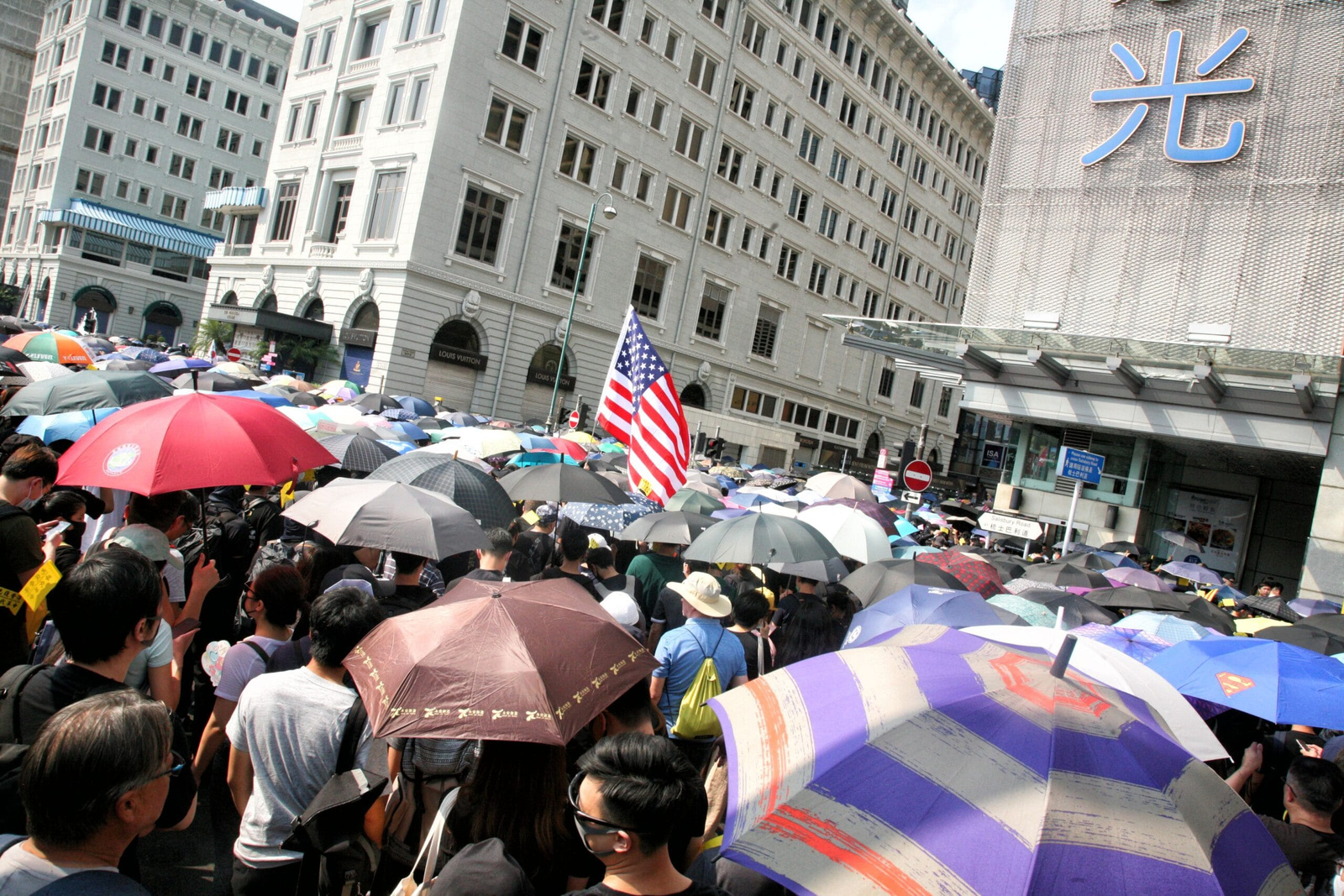
Protests, Festivals, and Political Rallies
Public gatherings present another grey area. At protests or rallies, photography can serve as journalism, documenting collective action and holding power to account. Yet individuals within the crowd may not wish to be identified, particularly in politically sensitive contexts. In Hong Kong’s 2019 protests, for example, many demonstrators wore masks not only to protect against tear gas but also to avoid being photographed and later identified.
Festivals and cultural events raise similar questions. Is photographing participants an act of celebration or intrusion? Much depends on the photographer’s intent and the way the images are presented. A candid shot of a dancer at Carnival may be embraced as joyful documentation, but the same image used in advertising could feel exploitative.
Commercial vs. Artistic Intent
Motivation matters. A candid image used in a gallery exhibition may be seen differently from one used in advertising. The former might be defended as art, the latter condemned as exploitation. Yet both involve the same act of photographing without consent, raising questions about whether intent should outweigh impact.
The blurred boundary between art and commerce is particularly evident online, where “street style” blogs and influencer accounts often mimic the aesthetics of candid photography. What looks like art may in fact be a commercial enterprise, complicating how viewers interpret the ethics of the image.
Context and Meaning
Street photographs do not exist in isolation. Captions, framing, and placement all influence interpretation. A candid image published in a tabloid may feel invasive, while the same image in a museum might be celebrated as art. This demonstrates how meaning is not fixed but shaped by context.
The same photograph can oscillate between dignity and exploitation depending on how it is presented. For example, an image of a protester might be framed as heroic in one publication and criminal in another. The photograph itself has not changed, but its meaning has been transformed by editorial choices.
Cultural Expectations
Different societies hold different views on privacy. In Japan, for example, there is a strong cultural emphasis on personal space and respect, which influences attitudes towards candid photography. In contrast, American traditions of free expression often prioritise artistic freedom over individual discomfort. These variations remind us that the debate is not universal but culturally situated.
In Germany, personality rights are so strong that even group photographs at public events can be legally contested. In India, by contrast, candid photography is often embraced as part of documenting vibrant public life. These differences show that what feels intrusive in one culture may feel celebratory in another.
Contemporary Challenges
Street photography today faces pressures that its early pioneers could scarcely have imagined. The act of taking a candid image in public has not changed much, but the environment in which those images circulate has transformed dramatically.
Smartphones and Mass Amateur Photography
The rise of smartphones means almost everyone is now a potential street photographer. Billions of candid images are taken daily, often shared instantly online. This democratisation has blurred the line between professional art and casual snapshots. It also raises questions about whether the sheer volume of images dilutes the genre’s artistic value or enriches it with diversity.
The accessibility of cameras has also changed the social contract. In the past, being photographed in public was relatively rare; today, it is almost inevitable. This ubiquity has made people more self‑conscious, sometimes altering behaviour in public spaces. The candid moment is harder to find when everyone knows they might be recorded.
At the same time, the sheer abundance of images has created new opportunities. Amateur photographers occasionally capture moments of extraordinary resonance, and viral circulation can elevate an unknown image into global consciousness. Yet this very virality raises questions about authorship, ownership, and whether the photographer retains any control once the image escapes into the digital commons.
Social Media Circulation
A photograph once destined for a gallery wall or a book can now be uploaded to Instagram or TikTok within seconds. The reach is vast, but so is the loss of control. Subjects may find their likeness spread globally without context, commentary, or consent. The permanence of digital circulation intensifies privacy concerns, as images can be copied, reposted, and archived indefinitely.
Platforms themselves shape aesthetics. Instagram’s square format and emphasis on immediacy have influenced how photographers frame and share their work. TikTok has introduced motion and narrative, blending candid photography with video storytelling. These shifts raise questions about whether street photography is being reshaped by algorithms as much as by artistic vision.
The algorithmic dimension is crucial: images that provoke strong reactions—whether admiration, humour, or outrage—are more likely to be promoted. This can incentivise photographers to seek spectacle rather than subtlety, altering the genre’s balance between observation and performance.
AI and Facial Recognition
New technologies add further complexity. Facial recognition systems can identify individuals in candid photographs, linking them to databases and profiles. What was once an anonymous street scene can now be traced back to specific people. This shifts the debate from artistic ethics to questions of surveillance and data rights.
Artificial intelligence also enables “synthetic street photography”—images generated to look candid but created entirely by algorithms. These raise philosophical questions: if the image is not of a real moment, does it still count as street photography? And if AI can simulate candour, what happens to the genre’s claim to authenticity?
Some critics argue that synthetic images undermine the very essence of street photography, which depends on the unpredictability of real life. Others suggest that AI might extend the genre, offering imaginative reconstructions of urban life that complement rather than replace traditional practice.
The Rise of Staged “Street” Photography
Ironically, some contemporary photographers respond to these challenges by staging their “street” work—directing subjects or recreating candid moments. This raises another debate: does staging undermine the authenticity of street photography, or does it simply acknowledge the impossibility of true candour in today’s environment?
The practice is not entirely new—photographers such as Jeff Wall have long created large‑scale staged tableaux that mimic candid scenes. But in the current climate, staging can be seen as a pragmatic response to ethical and technological pressures, offering a way to preserve the look of candour without the risks of photographing strangers unawares.
Economics and Monetisation
Street photography has also entered the marketplace in new ways. Images can be sold as prints, licensed for advertising, or monetised through social media platforms. This commercialisation complicates the ethical debate: is it acceptable to profit from candid images of strangers, even if the work is presented as art?
The economics of attention also play a role. Photographers who build large followings online may find themselves tailoring their work to maximise engagement, sometimes at the expense of subtlety or respect. The candid image becomes not only art but also content, subject to the same pressures as any other commodity in the digital economy.
Voices from Both Sides
The debate over street photography is not confined to academics or critics; it plays out among photographers, privacy advocates, and the public at large. Each group brings its own priorities, and together they reveal why the issue remains unsettled.
Photographers Defending the Practice
Many practitioners argue that candid photography is essential to their art. They see themselves as observers of society, capturing fleeting truths that would otherwise vanish. Cartier‑Bresson famously described himself as a “hunter” of moments, and contemporary photographers echo that sentiment, insisting that spontaneity is the lifeblood of the genre.
Bruce Gilden, known for his confrontational style in New York, has defended his work by saying that “life is not polite—it’s in your face.” For him, the shock of the flash is part of the truth of urban life. Joel Meyerowitz, by contrast, has spoken of the joy of colour and light, emphasising the beauty of everyday encounters. These voices show the diversity of artistic intent within the genre.

Other photographers stress the democratic nature of the practice. Vivian Maier’s rediscovered archive is often cited as proof that even private, unnoticed work can later be recognised as art of great cultural value. For defenders, this suggests that candid photography is not only about the photographer’s intent but also about the collective memory it creates.
Privacy Advocates and Legal Scholars
On the other side, privacy campaigners stress the importance of consent and dignity. They argue that individuals should retain control over their likeness, even in public spaces. Legal scholars point to frameworks such as GDPR in Europe, which emphasise personal rights over data—including images—as evidence that society is moving towards stronger protections.
Some critics argue that street photography perpetuates power imbalances: the photographer has control, the subject does not. In their view, the genre risks normalising surveillance and eroding trust in public life. Academic voices in media studies have drawn parallels between candid photography and the rise of CCTV, suggesting that both contribute to a culture where individuals are constantly observed without agency.
Public Opinion
The general public is divided. Some people enjoy the idea of being part of a cultural record, seeing candid images as harmless or even flattering. Others feel violated, particularly when photographs circulate online without context. Surveys in the UK have shown mixed attitudes: while many accept photography in public as normal, a significant minority express discomfort when images are shared widely (Information Commissioner’s Office, Public Attitudes on Information Rights Survey 2025).
Social media has amplified these feelings. A candid image posted online can attract comments, memes, or ridicule, transforming what might have been an innocent photograph into a source of embarrassment. Public opinion is therefore not static but shaped by the platforms through which images travel. In some cases, subjects have demanded takedowns of images, while in others, they have embraced the visibility, even using candid photographs to build personal brands.
Case Studies and Controversies
Several high‑profile cases illustrate the tension. In Germany, photographers have faced legal challenges for publishing candid images without consent, reflecting the country’s strong personality rights. In contrast, American courts have often upheld the right to photograph in public, citing freedom of expression.
Closer to home, British photographer Martin Parr has occasionally faced criticism for his satirical depictions of everyday life. While many celebrate his humour, others feel caricatured or mocked. These controversies show how quickly public opinion can turn against photographers, even when their work is legally defensible.
Other examples include the backlash against Arne Svenson’s “The Neighbours” series in New York, where he photographed residents through their apartment windows. Though courts upheld his right to exhibit the work, many saw it as a violation of domestic privacy. The case highlights how artistic freedom can clash with deeply held expectations of personal space.
Towards a Middle Ground
If the debate over street photography has taught us anything, it is that neither side holds the full truth. To dismiss the genre as mere intrusion ignores its cultural and artistic value. To defend it without qualification risks overlooking the dignity of those who appear in the frame. Somewhere between these extremes lies a more balanced approach.
Codes of Ethics
Professional organisations have attempted to set guidelines. The National Press Photographers Association (NPPA), for instance, encourages respect for subjects and avoidance of unnecessary harm (NPPA Code of Ethics, 1991). In the UK, the Royal Photographic Society promotes similar principles, urging practitioners to consider the impact of their work on those depicted. While not legally binding, such codes provide a framework for responsible practice and signal that ethics are integral to artistry.
Respectful Practice
Many photographers adopt personal rules: avoiding images of children without parental consent, refraining from photographing vulnerable individuals, or choosing not to publish certain images even if they are powerful. This self‑restraint acknowledges that artistic freedom carries responsibility. Joel Meyerowitz has spoken of moments when he lowered his camera out of respect, recognising that not every scene should be captured.
Responsible Candour
A useful concept here is “responsible candour.” It suggests that candid photography can remain authentic while being mindful of context. The act of photographing is not inherently exploitative, but the choices around publication, framing, and circulation determine whether it respects or undermines its subjects. Responsible candour means asking: Does this image dignify the subject, or diminish them?
The Role of Dialogue
Some photographers engage directly with their subjects after the fact, explaining their work or even offering prints. This does not erase the lack of initial consent, but it can build trust and transparency. In community‑based projects, dialogue has become central: photographers collaborate with local residents, turning candid documentation into shared storytelling.
Curatorial Responsibility
Museums and galleries also play a role in shaping how street photography is received. Curators can frame images with context, captions, and interpretive material that emphasise respect rather than voyeurism. Exhibitions that acknowledge ethical debates invite viewers to reflect critically, rather than simply consume images passively.
Gentle Nudge
While the debate remains unresolved, there is a growing sense that art thrives best when it respects human dignity. Street photography need not be abandoned, but it must evolve with awareness. The camera can still capture the vitality of public life, provided it does so with care.
Conclusion
Street photography has always been a genre that thrives on tension. It is at once a celebration of human life and a challenge to personal boundaries. Its defenders see it as a vital cultural record, a way of capturing the fleeting rhythms of everyday existence. Its critics view it as an intrusion, a practice that risks turning people into objects without their consent.
What makes the debate so enduring is that both sides are right, at least in part. Street photography does preserve moments that would otherwise vanish, and it does raise uncomfortable questions about privacy. The genre’s power lies in this unresolved state: it forces us to ask what we value more—artistic freedom or personal dignity.
The digital age has sharpened these questions. A photograph taken on a street corner can now travel across the world in seconds, stripped of its original context and subject to endless reinterpretation. Technology has made candid photography more accessible, but also more fraught. The camera is no longer just a tool of art; it is part of a wider ecosystem of surveillance, data, and circulation.
And yet, despite these challenges, street photography endures. It continues to inspire, provoke, and unsettle. It reminds us that public life is rich with meaning, and that the ordinary can be extraordinary when seen through a certain lens. At its best, it dignifies its subjects, offering glimpses of humanity that transcend the moment. At its worst, it risks exploitation—but even then, it forces us to confront the ethics of looking.
Perhaps the most useful position is not to choose one side but to remain aware of the balance. Photographers can continue to work candidly, but with sensitivity to context and respect for those they capture. Viewers can appreciate the artistry while questioning the ethics. And society can keep negotiating the boundaries, recognising that public life is both shared and personal.
Street photography will not disappear, nor will the debate around it. That is precisely why it remains one of the most compelling forms of photographic art: it asks us to look, to think, and to decide for ourselves where the line should be drawn.




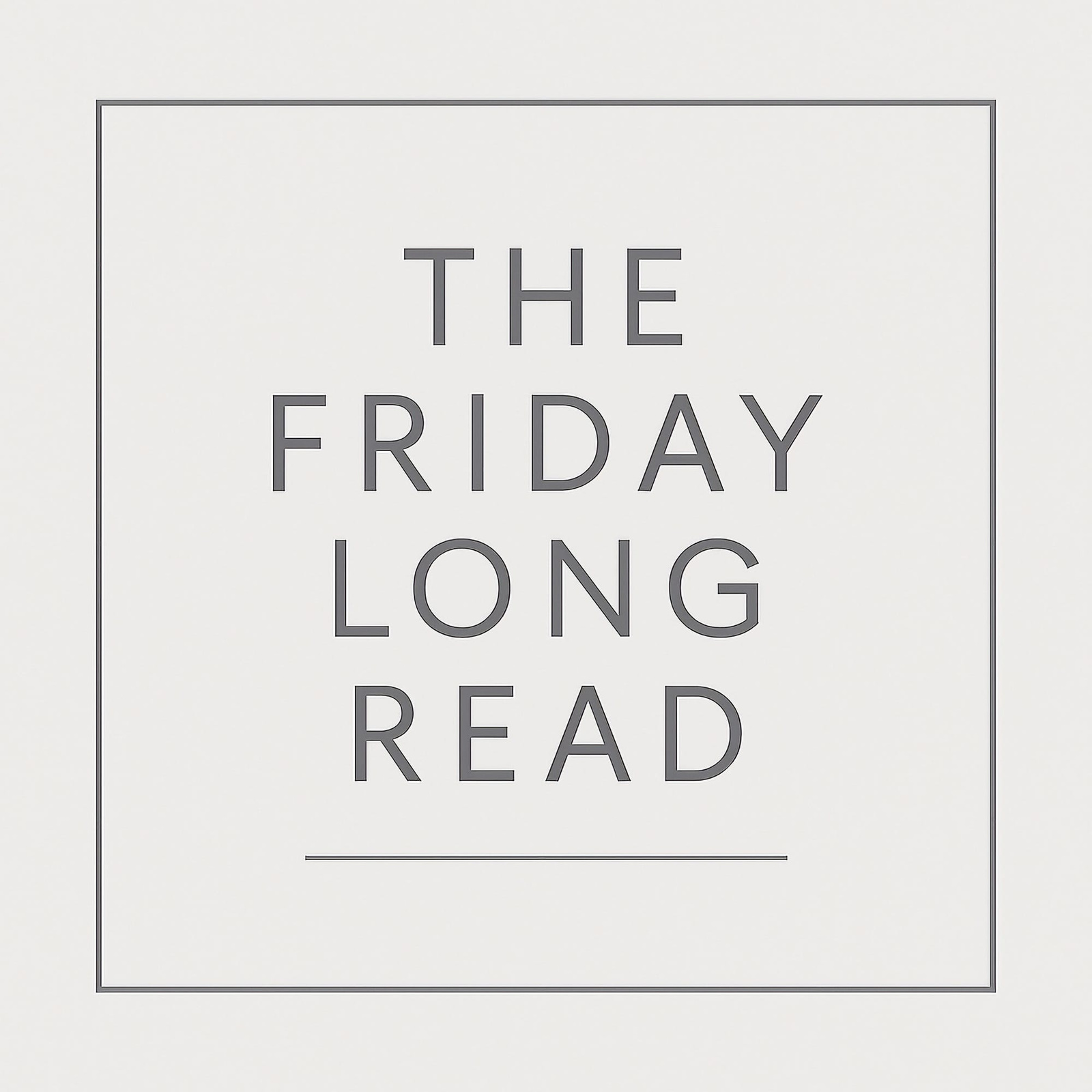

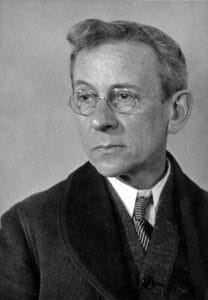
7 Comments
As someone who loves both photography and respecting people’s boundaries, I’m torn—do you think capturing candid moments on the street can ever truly be ethical, or is it always, to some degree, an invasion of privacy? Where would you draw the line if it were me behind the camera?
I find all of these Long Read’s fascinating and thought provoking. Thanks for doing them
Chris Bruce Thank you Bruce, that’s very kind and most encouraging.
Excellent essay, and timely in the light of the global social media dominance of those on the extreme-right, pushing their neoliberal interpretation of Second Amendment rights to mean absolutely no limits (unless it affects them of course). The consequences of this is to diminish and even destroy those cultural and legal differences the essay describes. Here in the UK and EU, privacy, and indeed child safeguarding, backed by law is under threat from the cultural imperialism of the new oligarchy.
Brian Shipman Thank you for your comments and your insight, Brian. I rarely make photos with people in them and publish them even less often but researching the subject has made me view things differently. Previously my thoughts were along the lines of “If CCTV companies can film us without consent then so can I” but the wider issues come when the photos are published.
I don’t use AI to put things into my photos that weren’t already there but if I made a photo which included a person whose removal would diminish the photo and who didn’t give permission, I would consider using AI to replace the real person in the photo with a generated one. Or at the very least, just replace their face so that they were no longer identifiable. Ethically, I could live with using AI in that way.
The only place I almost impossible to for street photography was Tunisia. There are so many regulations. One of them is you cannot take a photo of anyone in uniform even accidentally including postmen who are only wearing a cap. At Carthage a guy was using a video camera turned toward the presidents palace. A guard with a rifle walked up to him grabbed the camera he argued with him another guy dressed like a penguin came from nowhere armed with a hand gun took the camera threw it on the ground and told the guard to smash it which he did. ( like everybody he had been told only to take photo’s of Carthage so his fault. If our guide had spoke up he would have got 2 years.)
Christopher Whitfield Wow. I was in Egypt relatively recently and the law there (as I understood it) was that you should obtain written consent before taking anyone’s photo. I didn’t do that but I was careful to avoid taking people’s photographs if I judged that they probably didn’t want to be photographed. I didn’t get any bother from any of the many uniformed men with guns (police? army? security guards?) but a) I don’t usually take photos of people anyway and b) I was in the tourist areas with an experienced guide so they don’t really mind.
Some of the places required me to give the guard a “camera fee” which was definitely not a bribe or anything like that(!)